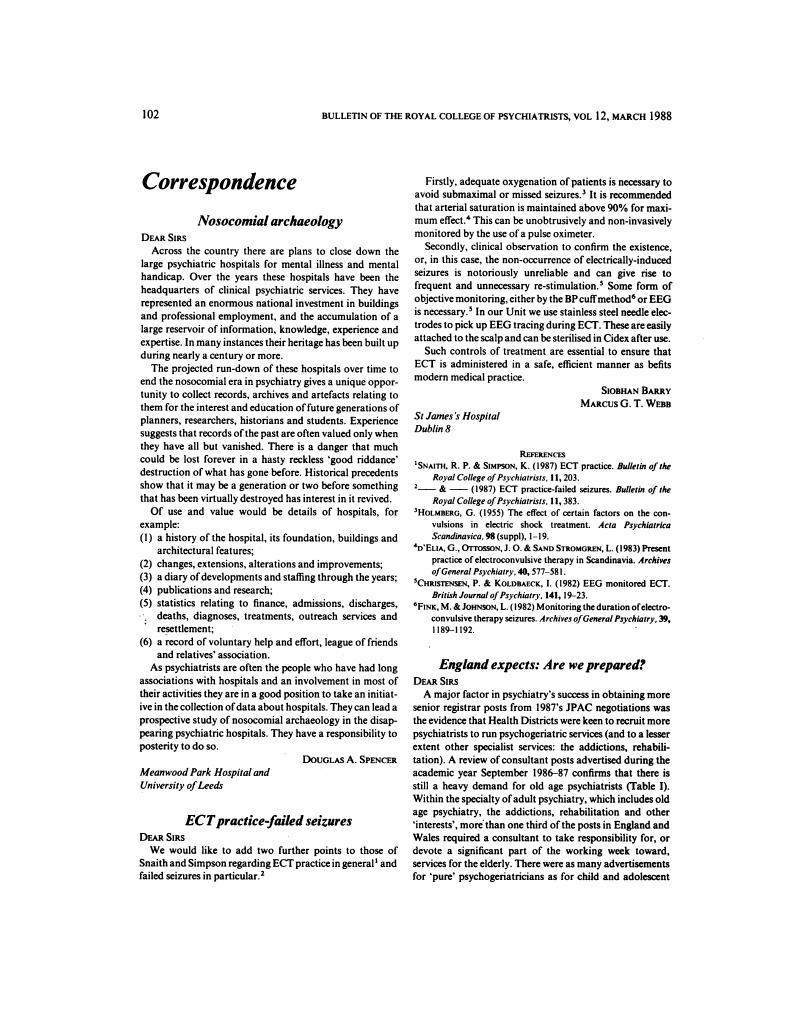No CrossRef data available.
Article contents
ECT practice-failed seizures
Published online by Cambridge University Press: 02 January 2018
Abstract
An abstract is not available for this content so a preview has been provided. As you have access to this content, a full PDF is available via the ‘Save PDF’ action button.

- Type
- Correspondence
- Information
- Creative Commons
- This is an Open Access article, distributed under the terms of the Creative Commons Attribution (CC-BY) license (http://creativecommons.org/licenses/by/4.0/), which permits unrestricted re-use, distribution, and reproduction in any medium, provided the original work is properly cited.
- Copyright
- Copyright © Royal College of Psychiatrists, 1988
References
1
Snaith, R. P. & Simpson, K. (1987) ECT practice. Bulletin of the Royal College of Psychiatrists, 11, 203.Google Scholar
2
Snaith, R. P. & Simpson, K. (1987) ECT practice-failed seizures. Bulletin of the Royal College of Psychiatrists, 11, 383.Google Scholar
3
Holmberg, G. (1955) The effect of certain factors on the convulsions in electric shock treatment. Acta Psychiatrica Scandinavica, 98 (suppl), 1–19.Google ScholarPubMed
4
d'Elia, G., Ottosson, J. O. & Sand Stromgren, L. (1983) Present practice of electroconvulsive therapy in Scandinavia. Archives of General Psychiatry, 40, 577–581.CrossRefGoogle ScholarPubMed
5
Christensen, P. & Koldbaeck, I. (1982) EEG monitored ECT. British Journal of Psychiatry, 141, 19–23.Google Scholar
6
Fink, M. & Johnson, L. (1982) Monitoring the duration of electroconvulsive therapy seizures. Archives of General Psychiatry, 39, 1189–1192.CrossRefGoogle ScholarPubMed



eLetters
No eLetters have been published for this article.